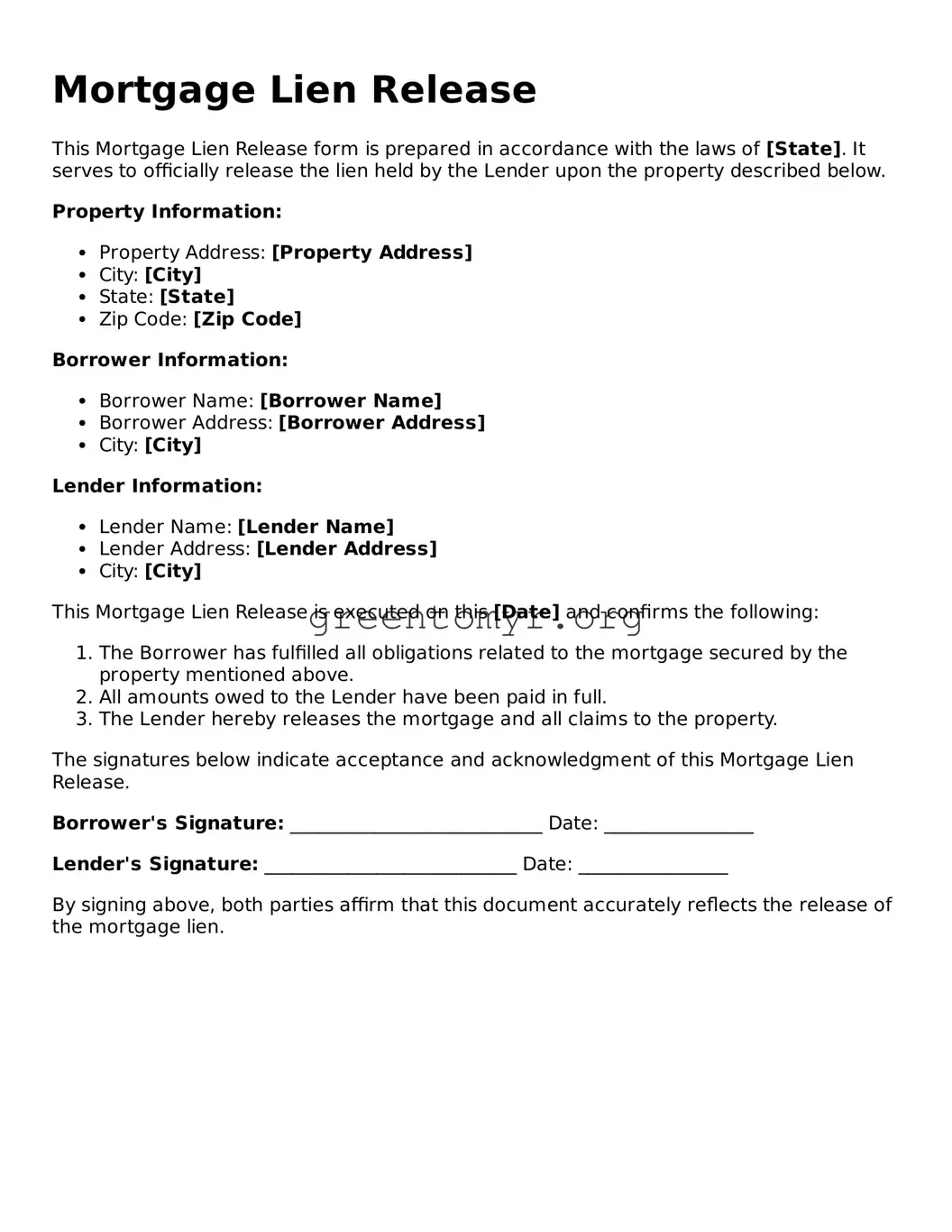Mortgage Lien Release
This Mortgage Lien Release form is prepared in accordance with the laws of [State]. It serves to officially release the lien held by the Lender upon the property described below.
Property Information:
- Property Address: [Property Address]
- City: [City]
- State: [State]
- Zip Code: [Zip Code]
Borrower Information:
- Borrower Name: [Borrower Name]
- Borrower Address: [Borrower Address]
- City: [City]
Lender Information:
- Lender Name: [Lender Name]
- Lender Address: [Lender Address]
- City: [City]
This Mortgage Lien Release is executed on this [Date] and confirms the following:
- The Borrower has fulfilled all obligations related to the mortgage secured by the property mentioned above.
- All amounts owed to the Lender have been paid in full.
- The Lender hereby releases the mortgage and all claims to the property.
The signatures below indicate acceptance and acknowledgment of this Mortgage Lien Release.
Borrower's Signature: ___________________________ Date: ________________
Lender's Signature: ___________________________ Date: ________________
By signing above, both parties affirm that this document accurately reflects the release of the mortgage lien.
